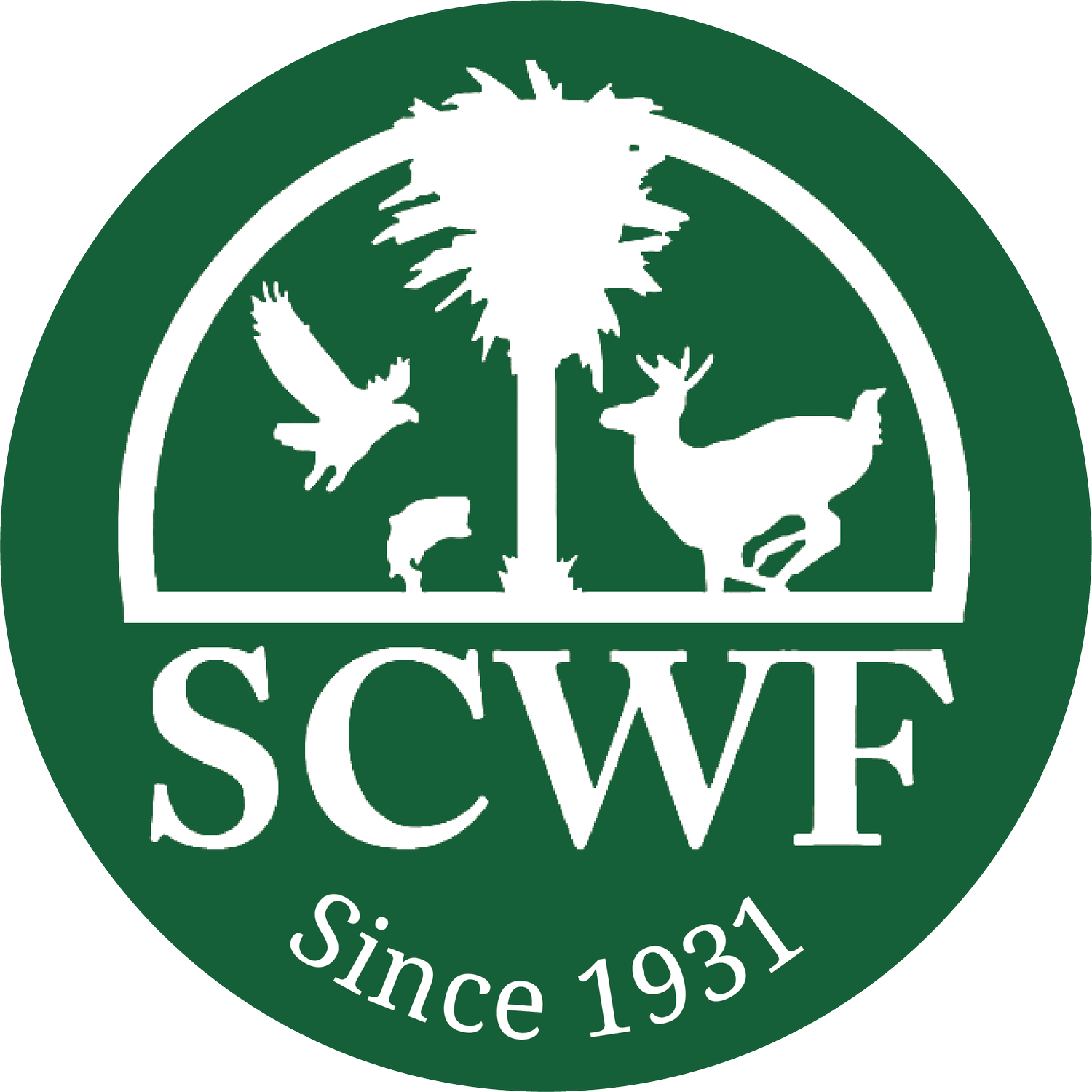Longleaf Pine Habitat
We are used to thinking of the rainforests and wetlands as being the most endangered ecosystems on our planet, but did you know that there is an ecosystem right here in South Carolina that is even more at risk? It is the longleaf pine forest.
Longleaf pines once covered over ninety million acres across the southeastern United States, reaching from Virginia to eastern Texas. This ecosystem had been in place for thousands of years, no doubt aided by the frequent forest fires set by Native Americans because longleaf pine is a fire-adapted species; in fact it is the keystone species in a fire-adapted environment. Frequent fires kept out other less well-adapted plants and animals, prepared the ground to receive the longleaf pine seeds, and allowed these magnificent trees to dominate the coastal plain of the southeast. The trees and the fires both supported a whole host of plants and animals that were adapted to regular, small intensity fires and could grow in the filtered shade of the longleaf. The result was an ecosystem that is one of the most ecologically diverse in the world and is home to some of the most rare and unique plants and animals on the continent.
Native Americans maintained this forest because it provided ideal habitat for plants and animals that were useful to them, notably white tailed deer and wild turkeys, made it easier to travel, and kept down the instance of wildfires. European settlers saw the benefits of maintaining the forest and found a number of additional uses for the forest and its products. The superb and moderately rot-resistant lumber was used for a variety products, and the high resin content of the trees was tapped to produce a number of “naval stores” such as pitch, tar, and turpentine. These forest industries supported many communities until the advent of the steam powered saw mill in the latter part of the nineteenth century brought about the their quick destruction.
Very little of the original virgin forest still exists, and it is estimated that no more than about three and a half million acres of longleaf pine forest remain in the region, about three percent of the original. Compare that to the sixty five percent of remaining wetlands in the southeast, and the forty three percent of the remaining rainforest in the world, and one can see just how endangered our longleaf pine forest really is. And even the three percent figure is probably too high because many of the longleaf pine forests are not managed and no longer actually support the ecosystem that accompanied these outstanding trees. The destruction of the forest, and more importantly the destruction of the ecosystem, has resulted in twenty nine plants and animals ending up on the federally-listed threatened or endangered species list.
Fortunately today there are a number of government and non-profit organizations working to bring back the longleaf pine. A variety of grants are available to promote the planting of longleaf pines, and much information is available to landowners on the proper management to insure their survival. These efforts are paying off and it is believed that we are now seeing an increase in longleaf pine acreage across the region. Most of this increase is happening among large private landowners who are planting the trees for a variety of reasons, one of which is a strong conservation ethic. But there are also good economic reasons to consider planting longleaf pine. They are more drought resistant than other pine species, more resistant to hurricanes and many insect pests, and provide better quality timber and habitat for bobwhite quail and wild turkey.
Longleaf pine resources:
Longleaf Alliance: www.longleafalliance.org.
Planting funds & cost-share opportunities: https://longleafalliance.org/what-we-do/longleaf-assistance/
Tree seedlings available for SC landowners here: https://www.state.sc.us/forest/nur.htm

![[Image Description] A long-leaf pine forest.](https://images.squarespace-cdn.com/content/v1/5804eb039f74569692067655/1491406375244-E8B2LJZAKBQJW4I5DAO9/Longleaf+Pine+1+Steve+Moore+sized.jpg)

